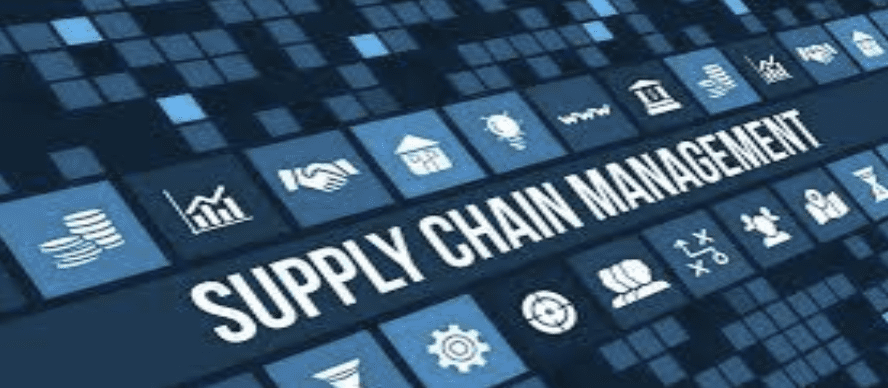Supply Chain Management (SCM) is a field of business that refers to the movement and conversion of raw materials from the suppliers to the finished product for customers. SCM is based on centralized control of production, storage, and distribution (the entire supply chain). It represents a core function for many businesses today.
With advances in technology and software, supply chain management has evolved into a complex set of activities that requires careful planning and resource management. It often involves collaboration between members of multiple departments within an organization as well as partners and stakeholders outside the organization.
The Importance of Supply Chain Management
SCM is Important for Business in Many Ways
- The main goal of SCM is to make a company’s supply chain operations efficient in terms of cost and speed. A properly managed supply chain network ensures that production departments use economical raw materials and that distribution is fast and efficient.
- SCM gives complete visibility to all items in the supply chain. This visibility helps to ensure that there are no interruptions in the flow of goods from start to finish. By carefully selecting the right suppliers and distributors, companies can streamline the buying and selling processes.
- With controlled planning and execution, supply chain management also helps to identify losses due to faulty operations. Businesses can use these opportunities to improve production and distribution processes.
- Supply chain management mitigates risks for companies by keeping them safe from expensive lawsuits and product recalls.
The net effect of optimal supply chain management practices is a high-performing business with satisfied customers. In the long term, SCM can make a business both profitable and sustainable. The ability to identify problems and opportunities pertaining to supply and demand conditions in the marketplace also serves as a driver of industry innovation.
Understanding Advanced Planning Concepts
As we mentioned earlier, supply chain management is a complex interdepartmental effort that requires multiple units to work cohesively as a team. It involves specialized planning that coordinates with both internal and external stakeholders to ensure that supply chain processes are managed effectively. Companies are also investing significant funds to automate these processes through MRP and ERP software.
However, before any organization chooses to implement SCM software, it is crucial to understand the theoretical foundations of supply chain planning. By knowing the requirements of the organization, supply chain managers can adapt the business model that works best for the company, making planning and implementation simple and straightforward.
A typical supply chain revolves around the five key aspects of supply chain management; each being managed by a separate department within or outside the organization. These are:
- Suppliers
- Manufacturers
- Distributors
- Retailers
- Customers
Each of these areas involves a specific supply chain cycle. The most commonly recognized cycles include the customer order cycle, replenishment, cycle, manufacturing cycle, and procurement cycle. These cycles overlap with different departments and they typically run simultaneously.
Each cycle can be split into planning modules that have a specific role and objective. These include demand planning, supply planning, sales and operations planning, and product management. The importance of each planning segment depends on the nature of the business and its supply chain requirements. For example, a business involved in leather hide processing will have to focus heavily on the demand and supply of leather and tanning chemicals. A shoe factory, on the other hand, will have to plan its manufacturing carefully. A company that distributes different shoe brands won’t have to worry about manufacturing runs but will have to focus on meeting its retail customer orders.
By understanding the planning processes in a modular way, a company can use SCM practices to make their business flexible and optimize supply chain operations to meet evolving customer demands. Flexibility is especially important if the business is operating in multiple markets.

6 Main Types of Supply Chain Models
There are six main supply chain models. They can be adapted to fit the needs of a business.
- Continuous Flow Model: This is a traditional supply chain model that involves repeatedly manufacturing one product. This model works if the business environment is stable, the product is mature, and customers don’t need any variations.
- Agile Model: Agile models work for businesses dealing with special products that require careful handling. The focus of this model is more geared toward fast transportation rather than automation. It is profitable only if the volumes justify the transportation costs.
- Fast Model: This model focuses on products with a short life cycle. It is a useful choice for goods with a quick turnover that capitalize on a seasonal or temporary trend. Being able to adopt this model is widely seen as a competitive advantage in the supply chain business.
- Flexible Model: A flexible model means that the business has the flexibility to increase production to meet peak demand, and cut it down when needed. It is a useful model for many types of products.
- Efficient Model: Many industries have low-profit margins and their business relies on efficiency in production processes. An efficient supply chain model capitalizes on these requirements.
- Custom Model: Custom models are tailored to a business’s specific requirements. They usually involve a product with a high degree of customization and a mix of traditional and agile models.
The Role of SCM Models in Advanced Planning
Every organization needs to recognize the market outlook and the supply chain management model that best fits its business requirements. This combination of the business environment and supply chain model affects the planning modules that the business may need to realize its full potential.
A continuous flow model works in a stable market where demand and supply are not a major problem. In such a case, material resource planning and inventory management are key areas where a business is able to reduce operational costs. Similarly, companies that have one product may focus on fast distribution to gain a competitive advantage.
For a retail business that must keep shelves filled with its high-demand products, there will be a need to assess the capacity of the retailers as well as your own warehouses. This is where capacity planning is essential.
A company trying to maximize efficiency may want to focus on accurate demand forecasting to keep inventory lean. This is where demand planning and inventory will be most useful. Still, some organizations may look to consolidate their supply chain operations by vertically or horizontally integrating other businesses. Introducing a new business unit dealing in a specific part of the supply chain introduces additional SCM planning requirements to consider.
However, many businesses are turning to a combination of flexible and custom models. Flexibility in a supply chain is a desired feature, and certain legal requirements for taxation and documentation mean that standard modules provided by software vendors are not an option anymore. Most companies are, therefore, turning to specialized software and consultants to implement these models.
Introduction to Supply Chain Management Software
Supply chain management is made easier with the help of software such as Enterprise Resource Planning (ERP) software. Some software is specific to a single function, like Transportation Management Software (TMS), Material Requirements Planning (MRP), and Warehouse Management Systems (WMS).
ERPs are typically modular in design, and costly to implement. However, the best thing about ERP solutions is that they help to automate the entire supply chain network from end to end. The functionality of ERPs varies across different vendors, but in general terms, some packages offer solutions for the following business processes:
- Order management (requirement gathering to completion)
- Financial management (payables, receivables, cash flows, and accounting statements)
- Sales management
- Inventory management and material management
- Warehouse and distribution management
- Supplier management (purchasing and sourcing)
Each of these functions is packaged as a software module that can be enabled or disabled for the buyer depending on their specific requirements.
Benefits of Supply Chain Management Software
SCM software has many benefits for the organization:
- Real-Time End-to-End Visibility: One of the most critical benefits of SCM software is the ability to provide an instant, transparent, and clear picture of all items and documents moving through the supply chain. Supply chain managers who can accurately determine the location of an item can quickly identify the status of a product order or a process and relay the information to the concerned departments.
- Reduced Lead-Times: For any product-focused business, SCM software can drastically improve production speeds. This has a ripple effect on other business processes and allows for faster product launches or sales completions.
- Global Business Optimization: Today’s business world is interconnected across borders. Suppliers and businesses constantly share information and with the right software, an enterprise can synchronize its requirements and processes with different partners and facilities around the world. It also helps a business to attain compliance with international rules and regulations.
- Cost Effectiveness: It’s no secret that automating your SCM processes can help save overhead costs incurred from manual workflows.
- Collaboration Made Easy: SCM software links many functions together, bringing every employee, team member, and stakeholder on the same page.
Almost all SCM software operates on a SaaS model, meaning you will be paying a subscription fee to access their services.
Key Features of Supply Chain Management Software
- Analytics and Forecasting: Allows managers to determine the performance of the business and plan their requirements. Today, many software packages also include AI-powered analytics for deep insights.
- Integration: Enables users to connect their systems with a wide range of software and hardware systems with the help of APIs and SDKs.
- Scalability: SCM software makes it easy to manage a growing business enterprise by making it easy to replicate processes for a new location or business unit.
- Customization: The modular design of SCM software allows organizations to opt for the alternatives that meet their requirements best.
- Role-based Authorization: SCM software enables organizations to assign a custom set of rules for each staff member. This helps to establish the control levels for approvals across the supply chain.
- Security and Cloud-based Systems: Businesses can keep their information secure through encrypted data transfer systems, anti-virus systems, and secure storage on a cloud server.

How to Choose the Right Supply Chain Management Software
- Identify gaps in your supply chain process and determine your specific requirements. For example, you might need specific data required for strategic decision-making. It could also lead to the creation of an entirely new department or job description for your staff.
- Search your available options. Take a look at the available software vendors and the modules they offer. Some factors that can help you choose the software include:
- The compatibility with your existing systems or clients
- User interface
- Determine the cost of implementation. Every software package has a specific requirement for implementation. This can vary in terms of data requirements, consulting costs, and purchasing costs. Depending on the SaaS model, you may also have to check the cost for each user.
Popular Supply Chain Management Software Options
Here are some popular options for supply chain management software.
ERPs
Oracle – One of the leading supply chain software platforms in the world
SAP – A robust platform with some of the best options for process automation and costing
SCM
Shippabo – One of the best overall shipping and freight forwarding software
Netsuite – Oracles; dedicated SCM software
WMS and Inventory Management
Sortly – One of the simplest inventory management systems on the market
Maropost – A flexible Solution for managing multiple warehouses
TMS
Manhattan – An out-of-the-box TMS solution
Cloud Logistics – A cloud-based solution for local road transport
MRP
Genius ERP – A standout platform for manufacturing planning and scheduling
Epicor Kinetic – A manufacturing-oriented SCM solution for shipping and warehouse management

Conclusion: Achieving Success with Supply Chain Management and Advanced Planning Software
Successful implementation of SCM software that allows you to perform advanced planning tasks like demand and supply planning, capacity planning, and production scheduling, will help you immediately realize organizational gains.
However, while it is clear that SCM software and advanced planning techniques go hand-in-hand, it’s worth emphasizing here that the path to a successful implementation depends on specific circumstances surrounding your business. With that in mind, there are many ways to solve a given SCM problem or take advantage of a new market opportunity.
At RTS Labs we make software that gives you an unfair advantage. Our elite cross-functional teams bring you the agility of a startup and the scalability of an industry leader.






